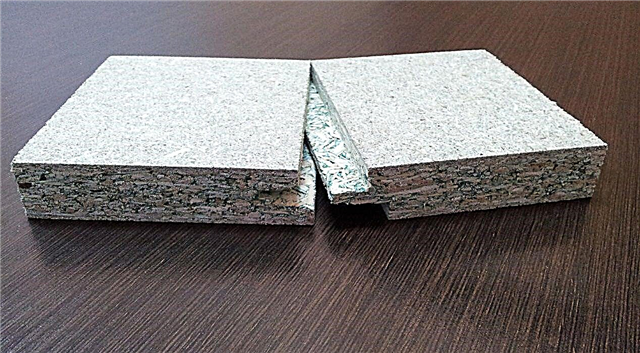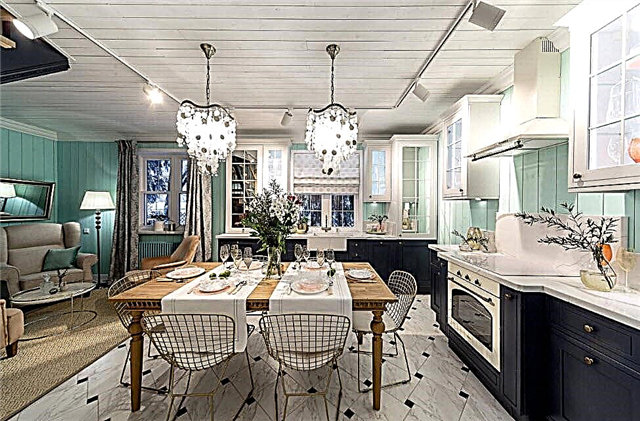
The range of paints and varnishes is expanding every day, there are a large number of varieties of varnishes. In its production, caustic organic solvents are not used, therefore acrylic varnish is an environmentally friendly paint and varnish material, which also contributes to an increase in demand for this material.
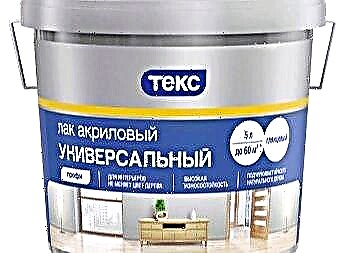

Features
Acrylic varnish is a transparent, colorless water-based material. Due to the presence in the composition of the liquid, which tends to evaporate, the varnish dries quickly. Depending on the surface and the desired result, it can be applied in a thick, paste-like or in a liquid state diluted with water.
After drying, the varnish creates a shiny, smooth film that resists ultraviolet rays, liquids, abrasion, and enhances the color and structure of the wood. Subject to the rules of application, the acrylic coating is quite durable and flexible, does not crack and lasts for many years, protects wood and other surfaces from scratches, fading, moisture. When necessary can be removed after drying, just using a special solvent - a wash.


Acrylic varnish has been used in construction relatively recently, but despite this, it managed to gain popularity among consumers. It is well diluted with water, ether, alcohol, does not emit an unpleasant odor, forms a strong adherence to the surface, does not harm health, therefore it is suitable for interior and exterior decoration.
For varnishing of surfaces it is not necessary to resort to the help of qualified specialists. After reviewing the information provided in this article, you can do it yourself.
You can varnish various surfaces - cardboard, wallpaper, decorative plaster, plastic, brick and others.
Acrylic varnish consists of the following components:
- acrylic resin
- plasticizer
- water,
- special additives - give the material certain qualities, for example, varnish for wood contains antiseptics that prevent rotting of wood.
High physico-chemical characteristics contribute to the effective protection of the surface from aggressive chemical and mechanical influences.


Core qualities
Acrylic varnish has both advantages and disadvantages.
To start, we list the pros:
- Environmental friendliness. It does not contain organic solvents, no corrosive chemical odors.
- Quick drying. This is due to the rapid evaporation of water, and drying will take several hours.
- Plastic. Due to this composition, no cracks appear on the coating.
- Moisture resistance. After solidification, the resulting film protects the surface from moisture.
- Has a quick hitch with various surfaces. This suggests that this paint material can be applied to various surfaces without fear that it will peel off. It can be applied to paint or tinted as a protective topcoat.
- UV resistant. Such a coating withstands prolonged exposure to the sun and is not modified.
- Long life high-quality acrylic coating is at least 10 years.
- Abrasion resistance. This is especially true for acrylic varnishes designed for high loads.
- Ease of application.
- Weatherproof. The material is not afraid of temperature fluctuations, high humidity. It is thanks to such qualities that it is widely used for outdoor works.
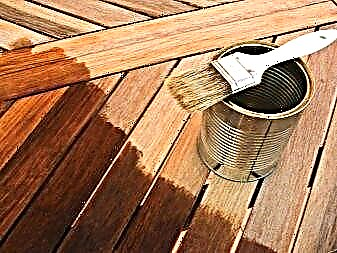

In addition to the advantages, there are some disadvantages:
- Under the influence of a water base, wood can rise, resulting in a rough surface. To avoid such an adverse effect, moisten the surface slightly in advance and sand it. The second option is to immediately apply the varnish, then you need to grind the first coat after drying and then apply the varnish again.
- Mandatory storage conditions. At sub-zero temperatures, the liquid in the composition freezes, and the varnish loses its quality.


Acrylic varnishes are classified by composition and appearance.
The composition can be divided into two varieties:
- One component. The connecting element in them is one substance - acrylic.
- Two-component. The connecting substances are two components - acrylic and polyurethane (also called urethane). Urethane lacquer is more durable.


By texture and appearance, three varieties can be distinguished:
- Matt - the surface after coating with such varnish does not have a gloss, is more like a velvet dense film. The varnish is transparent, perfectly hides minor irregularities on the surface to be coated.
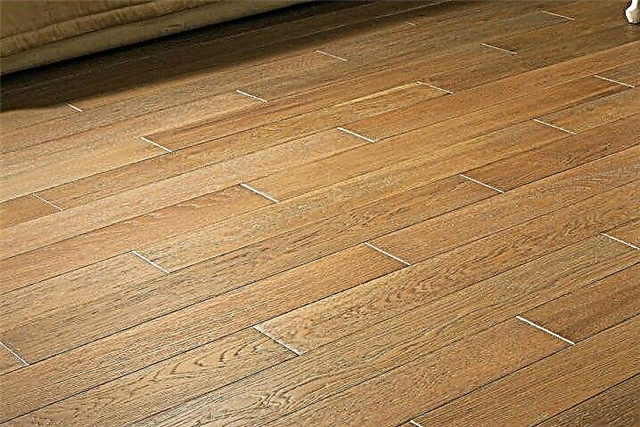
- Glossy - the surface covered by it has a pronounced luster. Thanks to the special composition, the gloss is enhanced, while there is a slight drawback - all irregularities and defects become more noticeable. Therefore, it is not recommended for use on materials with insufficiently even surface.
- Semi-matt - This is the average state between glossy and matte. The varnish is colorless, contributes to the manifestation of the texture and color of the material. Irregularities slightly appear. If possible, it is recommended that the surface be sanded before application.

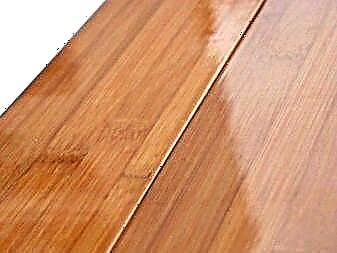
According to the purpose or specifics of exposure, there are several varieties of acrylic varnishes:
- Antiseptic Varnish - It is used to protect the structure of natural wood from the appearance of mold and fungal formations.
- Tinted varnish widely used to cover car parts, for example, tinting headlights and so on. This varnish composition protects the parts from the negative natural and mechanical effects.


- Waterproof insulation Designed specifically for outdoor use or for rooms with a high level of humidity.
- Spray varnish - A variety of aerosol varnish mixtures, very convenient to use. The aerosol is under pressure, making it easy to spray. The spray is used to form a protective coating on the car body, to give shine to surfaces made of plastic, metal, wood. This form of release is convenient to use.
The advantage over standard liquid varnishes is the mobility and speed of application by spraying, without the need for any additional tools. The spray is distributed on the surface with a thin layer, due to which it dries quickly. Aerosol sprays are both colorless and colored.


Scope of application
Acrylic varnish is widely used in the production of exterior and interior decoration.
They can cover various interior items made of wood, stone, brick, metal, plastic. This paintwork material is convenient to use, dries quickly, protects surfaces from damage.
You need to choose a varnish type depending on the functional purpose of the surface, so you will not only significantly increase the life of the products, but also emphasize the structure of the building material.
For example, it is recommended to apply a matte varnish on a brick wall or wallpaper. It will keep the repair in its original form for many years, and the absence of formaldehyde will make it safe even for use in nurseries or in the kitchen.
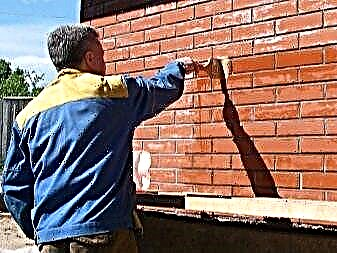
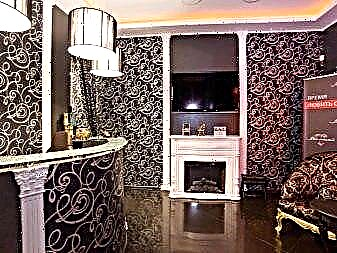
For processing a wooden floor or parquet, special varnishes should be chosen. The material for the whole board forms a more durable and plastic film, which does not crack when temperature fluctuates and the level of humidity. The components included in the composition of the varnish for the floorboard create a thin film.
But also varnishes, intended only for internal work, are often not suitable for work outside the premises, as they do not so well withstand the effects of the environment.
A wide range and a wide range of colors allow you to decorate furniture and interior items - various frames, paintings, railings, steps, figurines.
Manufacturers
In the construction markets, it is quite difficult to determine the choice of paints and varnishes due to the wide range and the large number of manufacturers.
There are several popular companies that produce quality products:
- "Optimist" - A major Russian manufacturer of paints and varnishes with a twenty-year history. The company strictly complies with quality standards and uses high-quality materials in its work.
- Vgt - A Russian company specializing in the production of varnishes, paints, enamels, pigments and other acrylic materials. The company has its own research center. A wide range of products of this company is provided in construction stores.
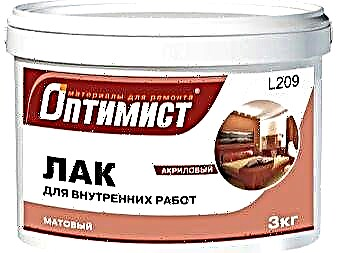
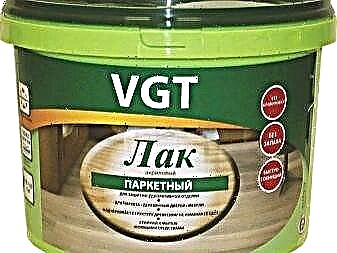
- Tikkurila - One of the leading companies in the production of paints and varnishes in Finland, Sweden and Russia. Acrylic varnishes of this brand are in great demand among consumers.
- Pinotex - The products of this company are famous for their quality, are in demand throughout Europe, and produce universal, waterproof, wear-resistant acrylic varnishes.
- Lacra produces parquet and tinted varnishes with UV filter, the products have quality certificates.
Products from these manufacturers are known for positive reviews. Consumers note the absence of chemical odors, ease of use, durability of the coating, high wear resistance.
How to apply?
The most important stage of applying varnish is preparing the surface for coating. Acrylic varnish for wood is applied to a polished, fat-free and dry surface, free from dust. Poor polishing, grinding, drying can lead to the need to redo all the work first.
Acrylic varnish can be diluted only with water, but not more than 10%, so as not to reduce its quality.
To obtain a high-quality acrylic coating, strict adherence to the application conditions is necessary: the air temperature can vary from + 5 ° C to + 30 ° C. During application and drying, it is recommended to prevent drafts and direct sunlight.


For the application of this paintwork material you do not need expensive tools. It is convenient to apply with rollers and brushes. To protect the skin, gloves should be used.
Before applying the varnish, be sure to carefully mix until a homogeneous consistency.
If it is necessary to give the tree the desired shade, the impregnation of the desired shade is first applied on a water basis. Then you need to let it dry well, and then apply a clear varnish.


When working, it is important to adhere to all the recommendations specified in the instructions, including the temperature regime. It should be noted that at high air temperatures it quickly sets. This feature can create some difficulties when varnishing large areas. If you notice some flaws after drying, they can be eliminated with the help of sandpaper. But this applies to matte varnish.
With glossy, painstaking work remains. A poor-quality layer can be removed by washing or under the influence of a building hair dryer. After washing, the surface must be washed and dried, and then again covered with a new layer.
Experts still recommend applying it to the prepared surface, then leaving it for 24 hours to dry, although many instructions indicate that it is possible to apply the next layer in 30-120 minutes.

The varnish should be applied in several layers with the obligatory drying and grinding of the layers, except for the final one. Grinding occurs as follows: the surface is moistened and processed with fine sandpaper. Then, after it dries, wipe off dust and other impurities from it. Now you can apply the top coat.
It is especially important to properly polish the glossy varnish after each application (except for the top coat). This is due to the fact that the glossy layers form a weak coupling among themselves. Combination of matte material with glossy will help facilitate work.


The surface on which you intend to apply the parquet paint and varnish material must be primed first. So, you can avoid the appearance of bumps and defects, and less material will be left for you. For varnish of a parquet use a special two-component acrylic varnish. Due to its composition, it forms a denser film, resistant to various kinds of damage and scratches. The final coating can be tinted and give the desired shade to the wooden floor.
The varnish for flooring involves heavy loads on the surface, respectively, and it dries longer than other varnishes. Usually it dries out completely only after a week.. Then it will be possible to install heavy furniture. Truth, if the temperature during drying will be no more than +10 degrees, then this will need to allocate twice as much time.

Tips
For the correct execution of work, use the advice of professionals.
- Shake and mix thoroughly immediately before application to make the composition homogeneous. In no case do not add solvent - only water, but not more than 10%.
- Tools (brushes and rollers) after work can be easily washed with warm water and soap.
- During drying, make sure that ultraviolet rays do not reach the surface. And the danger is the presence of drafts.
- At the final stage of drying the floor, it is better not to walk in hard shoes to avoid scratches.


- To avoid the appearance of bubbles, the varnish layer preceding the finish must be sanded. Layers are recommended to be applied on average with an interval of 12 hours. With a low air temperature and an increased level of humidity, two times more time should be allocated for drying.
- Be sure to use gloves during application.
- When restoring already varnished surfaces, sometimes there is a problem with the elimination of irregularities. To level the surface, first apply 2-3 layers of colorless varnish, and then a tinted composition.
- If at the end of the work you notice irregularities and want to eliminate them, you can wash off the varnish layers with a special wash.

Having an idea of the composition, properties and rules of applying acrylic varnish, you can use this information in practice when making repairs with your own hands, without making mistakes.
For how to apply acrylic varnish without stripes and smudges, see the next video.
The composition of acrylic varnish for wood
In appearance, acrylic varnish for wood is a homogeneous transparent liquid that is odorless and easily soluble in water, ethers or diethyl solutions. Its excellent performance is due to its unique composition, which includes the following components:
- aqueous dispersion of non-pigmented acrylic resins (liquid polymers),
- plasticizers to give the varnish elasticity and plasticity,
- polyurethane thickener providing the necessary density of the material,
- mineral oil emulsion - to prevent foaming,
- antiseptics that protect wood from pathogens,
- coalescents to improve film formation.
Sometimes in the manufacture of acrylic parquet varnish, coloring pigments are added to it, which allows you to get an attractive coating that mimics the natural colors of wood.
Varieties of acrylic varnishes
There are several ways to classify a material. Depending on the chemical composition, it is divided into two characteristic groups:
- One-component - a product where only acrylic is the link. This varnish is completely ready for use and does not require preliminary preparation before application to the surface.
- Two-component - a material in which acrylic is supplemented with polyurethane. Lacquers of this type require mixing components before work, but unlike single-component varnishes, they are considered more durable and durable in use.
Since one of the main purposes of acrylic varnish for wood is to create a decorative effect, during its manufacture, manufacturers give the material a different degree of gloss. With this in mind, the compositions are of the following types:
- Glossy - provide a dazzling gloss to surfaces and create a mirror film that reflects light and objects.
- Matte - have a velvet structure, which gives the processed products a certain silkiness.
- Semi-gloss - an average option that gives a little shine, but does not reflect objects.
The TBM-Market online store sells high-quality acrylic varnishes for wood and offers its customers a wide range of products in any of these varieties. All materials presented in our catalog have quality certificates and fully comply with modern European standards.

Advantages and disadvantages of acrylic varnishes
Acrylic varnish for wood is a relatively new material. It was first received in the 1950s and quickly gained worldwide recognition. Over time, manufacturers were able to further improve their products and achieve their excellent technical characteristics, endowing the compositions with a wide range of undeniable advantages:
- ecological cleanliness and safety for human health,
- resistance to blows, scratches, chips,
- high adhesion and spreadability on the surface,
- UV resistance
- moisture resistance
- abrasion resistance and preservation of its original appearance for many years,
- excellent antiseptic parameters, thanks to which the acrylic parquet varnish reliably protects the tree from fungi and mold,
- increased thermal conductivity and thermal stability,
- quick drying.
Acrylic varnishes for wood preserve the natural beauty of wood and prevent the appearance of stains on it, which are formed under the influence of resins and tannic components. However, with all its advantages, materials have a number of disadvantages:
- require compliance with a certain temperature regime during application,
- have a fairly high price,
- they are picky in storage (because of the water included in the composition they do not like low temperatures),
- can raise wood fibers.

Areas of use
Due to its excellent physicochemical properties, acrylic varnishes for wood are successfully used in any repair and construction work. Since the compositions are distinguished by high protective and aesthetic characteristics, many masters prefer them as a worthy replacement for conventional paints. If you are looking for a quality material that will protect the wood from the negative environmental impact, acrylic varnish for wood will be the best solution in many areas of life:
- in building construction - for processing entrance doors, window frames, bath walls or outbuildings,
- in the decoration of interior spaces - for interior doors, wall-mounted wooden panels, for applying acrylic parquet varnish on floors, stairs and baseboards,
- in landscape design - for processing garden benches, arbors, outbuildings,
- in creating interior items - for decorating tabletops, furniture,
- under repair - to restore and enhance the decorative qualities of wooden products.

Application technology
As mentioned above, any work with acrylic varnish for wood should begin with the preparation of the surface. If the treated wood is covered with an old layer of varnishing, it should be removed using chemical means, hand tools or thermally. After removing the old varnish, the product is cleaned of dust, degreased with soap and water and coated with a primer.
Apply acrylic varnishes for wood should be on a dry surface in several layers - in special cases, their number can reach 5-6. After applying each layer, it is necessary to wait for its drying and to process with fine sandpaper. Grinding the penultimate layer is recommended to be done on a damp surface, that is, moisten the coating, sand it with sandpaper and only then apply the finish layer.
To create an ideal surface, it’s worth it to use a few useful tips:
- when processing products, drafts and exposure to direct sunlight should be avoided,
- according to the instructions, each subsequent coat can be applied 30-120 minutes after the previous one, but, as practice shows, it is best to leave the varnish to dry for at least 4 hours,
- if you want to give the product a noble shade, you can initially apply tinting impregnation on it, and then colorless acrylic varnish for wood (as an option, varnish is diluted with impregnation in a 5% ratio).
Manufacturers Overview
On the modern market there are a large number of manufacturers producing high-quality acrylic varnishes for wood with excellent adhesion and a long service life. One of them is the German company Zobel, which offers consumers weather-resistant materials from the Deco-tec series for interior and exterior decoration. Its products are weather resistant and easily applied to the surface by effectively suppressing the process of droplet formation.
Excellent moisture resistance and durability are characterized by acrylic parquet varnishes made by another German brand - Hesse. The manufacturer produces polyurethane varnishes on acrylic resins, characterized by a short curing time and excellent performance. Many consumers prefer acrylic varnishes from the Rhenocoll brand, which introduces water-based thin-coat azure with high film elasticity and good protection against moisture, UV rays and mechanical stress.
Turning to the TBM-Market store, you can buy acrylic varnishes for wood from all these suppliers and order delivery of goods in Moscow and Russian regions. We guarantee the impeccable quality of our products, which allows us to create a durable coating for the complete protection of wooden surfaces.
The problem of varnishing the surface
Surface coating plays a dual role:
- Firstly, in many cases it is used as a decoration tool. Giving the surface a shiny smooth look. When applying colorless coatings, previously applied decoration is clearly visible. When used with toner, it is possible to enhance the effect of the previous tint.
- Secondly, and this is becoming increasingly important, a protective film is formed, which does not allow the material to collapse under the influence of the external environment.
From the main purpose of varnishing, the composition requirements also follow:
- Compatible with surface coating material.
- High adhesion to coating material.
- The formation of a film resistant to external influences characteristic of the operation of the coated object.
In the field of construction technology, modern acrylic varnishes well satisfy all these properties.
What is acrylic
Modern chemistry has given us many wonderful materials. The simplest acid containing carbon, called acrylic, is a colorless liquid with a pungent odor. The main component for producing acrylic is the well-known natural gas. Due to the properties of high-speed polymerization, solubility in water, and when a stable film forms in a chemical reaction, acid has become significant in the production of a number of polymers. So the acrylic suspension was born, on the basis of which acrylic varnishes began to be produced.
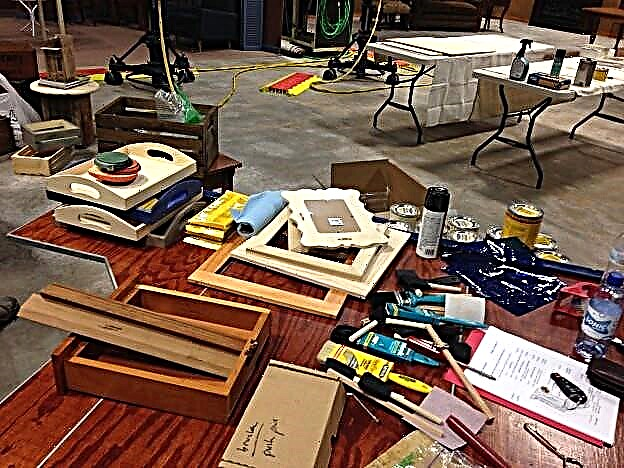
They have many advantages over their predecessors:
- Since the solvent is ordinary water, the varnish does not contain harmful highly volatile compounds.
- After application to the surface, it dries quickly.
- The resulting film is resistant to cracking.
- It is not destroyed by ultraviolet radiation.
- Hygroscopic.
- Chemically neutral.
- Most importantly, varnish has a low price.
Physicotechnical Specifications
Water-based acrylic varnish is used to protect and decorate wood products. In its composition it contains:
- Acrylic dispersion.
- An antiseptic that protects wood from decay and fungus.
- Plasticizer, forming a transparent film, to protect the product from chemical and mechanical effects.
- Often various refinement elements are added. For example, toner to shade the natural texture of wood.
Attention! Acrylic varnishes are exposed to ethanol and ether, as well as some types of diethyl solution.
When applying varnish, experts advise taking into account that it:
- It is odorless.
- After drying, it is not exposed to chemicals, including water.
- It can be mixed with any water-soluble paints.
- It can be used not only for coating wooden surfaces. Easy to lay on stone and brick.
- For work does not require special tools and protective devices.
- It can be used in liquid or paste form.
Positive points
Items covered with water-based acrylic varnish acquire a number of remarkable qualities marked by reviews:

- The rate of resistance to cyclical freezing-thawing increases.
- Moisture resistance increases.
- Material stores heat better.
- Softwood is not at risk of mechanical damage.
- The surface is UV resistant.
- The weight of the product practically does not increase.
- Elasticity is maintained.
- Microorganisms do not multiply.
- Most insects, pests of wood, it is too tough.
- Does not burn.
In addition, it is environmentally friendly and has high design qualities.
One-component varnishes
The concept itself suggests that only an acrylic dispersion is used as a binder. According to reviews, this type of acrylic varnish has the only drawback - low elasticity.
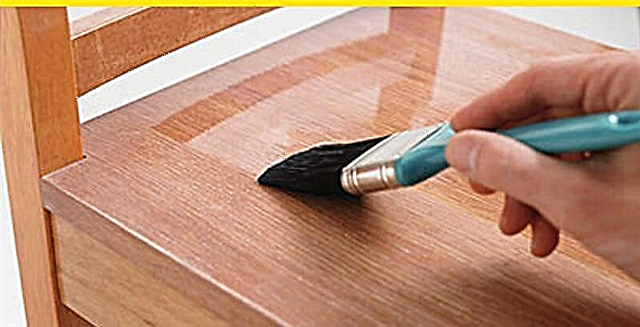
During vibrations and other mechanical influences, the protective film may peel off and as a result break. But the low price eliminates this drawback. They are effectively used when processing surfaces with low mechanical stress and short service life.
Two component formulations
More complex formulations, when polyurethane is used as the second binder, have sufficient elasticity to maintain their protective qualities for a long time. As a rule, such surfaces are able to withstand even the effects of salt water and do not accumulate static electricity. What makes the compositions very popular, especially as parquet acrylic varnish.

How often this happens - by acquiring one, we lose the other. Two-component compositions are more complex in production and have several disadvantages:
- Due to the presence of some organic solvents, it is undesirable to use them in the processing of children's furniture.
- Production errors will turn into a yellowed product over time.
- Good varnishes are very expensive.
In any case, choose the consumer.
Matte coating
Soft to the touch, almost velvety surface is obtained when using acrylic varnish for wood. At the same time, it is important for designers that the structure of wood or brick retain its original appearance. For example, when varnishing furniture made from precious wood. In this case, we select matte compositions. They perfectly protect the structure of the material, but they themselves remain almost invisible from the outside.
Varnished wood
The exact opposite requirement is when you want to improve the appearance of a wooden surface. An old tree, gypsum stucco molding, decorative elements can sparkle with new colors, gain a second life. Glossy acrylic varnish can give old things a new shine, protect from further destruction. In many cases, it is used to dissolve a number of dyes and is used as a color topcoat. If in a liquid state it forms a thin, barely noticeable shiny film, then the pasty shape allows you to create the illusion of glass coating.
Semi-Matte Compounds
The uniqueness of colorless acrylic varnish is that it allows you to work with almost any organic structure of the material. Having a soft penetration into the upper layers of the surface, it simultaneously forms a very strong film. The surface can be given any shades - from completely invisible to acid colors. In the elements of art decor, compositions that create a semi-matte protective film are very often used. Without irritating the eyes, it significantly expands the range of color sensations.
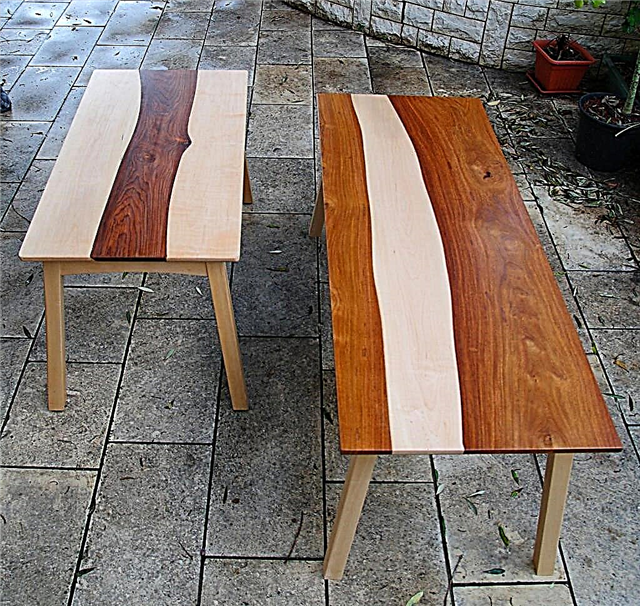
Aerosol form
Water as a solvent allows you to create mixtures of any consistency, including compositions saturated with neutral gases. When sprayed, they do not form a toxic cloud and can be used in everyday life. In the form of an aerosol, acrylic varnish can be used with virtually no protective equipment. The main thing is not to paint yourself. Of course, basic safety conditions must be applied:
All used items should be washed in soapy water, without waiting for the varnish to dry.
Technology of choice
As can be seen from the overview, the variety of varnishes makes the range of their application very wide. It all depends on the place of application and knowledge on how to use acrylic varnish.
- Decorating a kitchen worktop or kitchen utensils, it is worth considering that it is constantly exposed to mechanical and chemical effects. It also comes in contact with food. It is worthwhile to carefully look at the composition of the additives used. The blend must remain harmless under all conditions. The probability of microdoses entering the body is very high.
- To protect the surface from exposure to water, there are already other requirements. The main requirement is water resistance. For lovers of relaxation on yachts, acrylic water varnishes for wood are specially produced, which are not even afraid of the effects of sea salt in very difficult operating conditions.
- For parquet high resistance to mechanical stress is important. A good coating should withstand multiple loads - walking in shoes with a hard sole, furniture movement, pet claws and much more.
- Facade protective films are exposed to precipitation, repeated freezing and thawing. Great damage is caused by the excrement of birds, insect attacks.
- To decorate decorative elements, especially in the style of shabby chic, it is important to preserve the original idea of the author. Gloss will only interfere. Choose a matte varnish.
- Designers often try to give the surface a certain effect. For example, with a diamond shine. It is required to take into account the compatibility of the base composition with the material for the blend.
- Many compositions allow you to create the effect of the volume of the image.
- Often varnishes are used to enhance the tinting of the image.
Leading manufacturers
Application options can be listed ad infinitum. It is important not only how to apply the varnish or which composition to choose, but also who produces it. The high-quality composition of water-based acrylic varnish allows you to work wonders. Among the most famous brands can be noted:
- Scuba Eurotex, well protects against microorganisms and insects, small rodents also do not like to bite such surfaces. The facades covered with this varnish are not afraid of precipitation and temperature changes. It can be used on old surfaces, fiberboard and particleboard. Easy to lay on plywood.
- "Lacra" - provides all types of protection. It is applied to external and internal works. It is important that it is cheaper than the previous version with similar qualities.
- Pinotex is often used to decorate wooden surfaces. It is considered the most environmentally friendly.
- "Tex", well protects any surface both on the street and at home. It is incredibly resistant to any aggressive environmental influences. This version of glossy acrylic varnish is great for coating parquet.

- Tikkurila, has good decorative and leveling properties. Good antiseptic and excellent surface protection. The high price is justified by its quality.
The format of the article does not allow a detailed analysis of all types of acrylic varnish. If you need a choice, you can always turn to professional consultants.
Acrylic lacquer. What it is?
This is a special paint material, which is a viscous liquid, characterized by transparency and the absence of a pungent odor. Such compositions are a dispersion of plastic dissolved in an acrylic composition and water. This material has a number of specific characteristics.
A distinctive characteristic of this material is the possibility of dilution not only with alcohol and ether, but also with water. Thanks to the inclusion of rapidly drying solvents, it quickly hardens after application.
The coating obtained using this material is characterized by high decorative qualities and durability. There are several varieties of it, differing in composition and scope, so if you wish, you can choose the most suitable option.
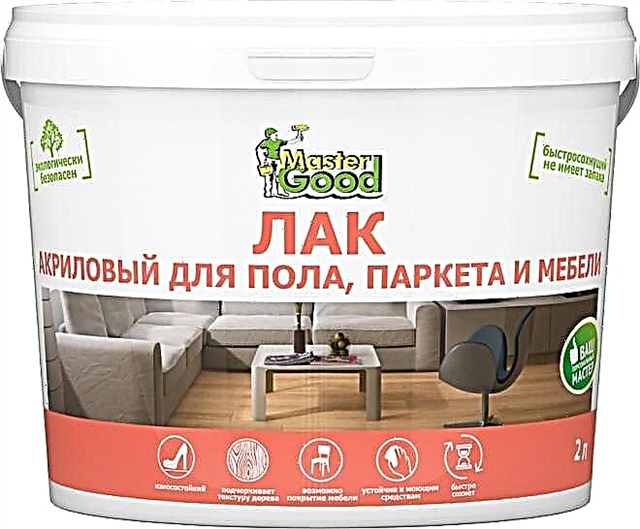
The benefits of varnish
Acrylic and polyurethane varnish has a lot of advantages and almost no disadvantages. The advantages of this material include environmental friendliness. This parameter is extremely important for surface treatment indoors. When applied, a pungent odor does not appear. In addition, after drying, it is not able to release toxic substances into the air.
The coating obtained after hardening is highly elastic. It does not crack even under the influence of environmental factors. Application of varnish is permissible in rooms where severe temperature changes are observed throughout the year.
This coating is able to repel moisture and retain its properties in contact with household chemicals. Thus, the coated surface can be washed without fear of deterioration of its appearance. Varnishes intended for surface finishing outside the house are able to withstand severe frosts and the effects of precipitation.
This coating is also resistant to ultraviolet radiation. Even after staying for a long time in direct sunlight, it does not turn yellow and does not crack. Moisture and UV resistance helps increase the life of any base. Many varnishes contain special antiseptics that make surfaces immune to mold and fungus. This effect is especially important when coating wooden surfaces.
The advantages of such a coating include a long service life of up to 10 years. The lacquered surface is resistant to abrasion and other mechanical damage. The advantage of this coating is its low fire hazard.
How to apply varnish?
The varnish is not able to hide irregularities and defects, so before using it, a comprehensive preparation of the base is recommended. From a surface it is necessary to remove greasy spots. Sand it first and then apply a water primer or tinted impregnation. In addition, a good effect allows to obtain surface grinding after application and drying of the first varnish layer, however, the material consumption in this case will increase significantly.
Shake well before use. Apply the composition with an air humidity of at least 50% so that it does not dry too quickly. The air temperature should be + 5 ... + 30 ° C. It is desirable that during drying the treated surface is not exposed to drafts and direct sunlight.
In some cases, it is necessary to apply 2-3 layers to get a smooth glossy surface. In this case, you need to wait for the drying of each subsequent layer and polish it with a fine sandpaper. Only the last layer does not require grinding. If the material accidentally hits a surface that should not be treated with it, then how to wash it off depends on the solidification stage. If the coating has not dried, you can wipe it with a damp cloth, but after hardening it will require a solvent to remove it.
Necessary tools
When working with this paintwork material, it is advisable to use personal protective equipment: closed clothing, a mask and gloves. When preparing surfaces for further processing, the following tools and materials will be needed:
- soap solution
- a vacuum cleaner,
- grinder machine,
- primer,
- brush,
- roller.
When varnishing the walls, you can use a spray gun or a ready-made spray. This will prevent drips. When processing floors, a roller or a wide brush is better.

Why should the surface be varnished?
Most building materials, including brick, wood, concrete, etc., are characterized by their ability to absorb various pollutants. Because of this, the surface quickly loses its attractive appearance. To prevent this, it is necessary to varnish these materials.
In addition, the varnish coating protects materials from the effects of various environmental factors, which increases their service life. Coating floors with such a composition prevents defects and quick mashing. The use of such a coating improves the decorative qualities of surfaces.
Do I need to varnish acrylic paint?
Acrylic paint does not require coating. It has sufficient resistance to environmental factors. However, if there is a need to give the painted surface a glossy sheen, then varnish for water-based paint can be used. In addition, additional processing is recommended for outdoor work. This will create a more weather-resistant coating.

